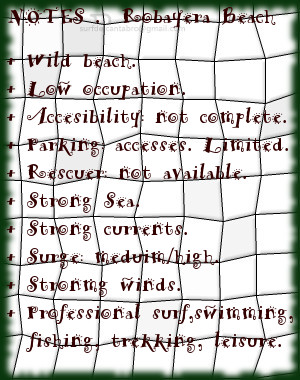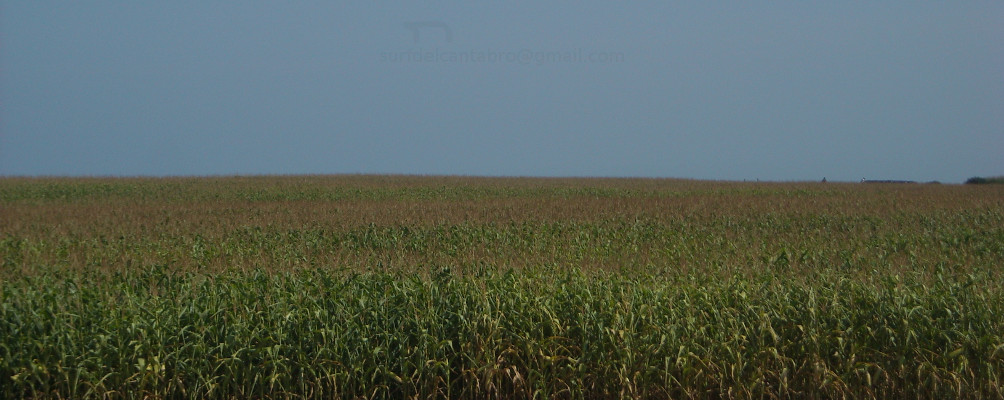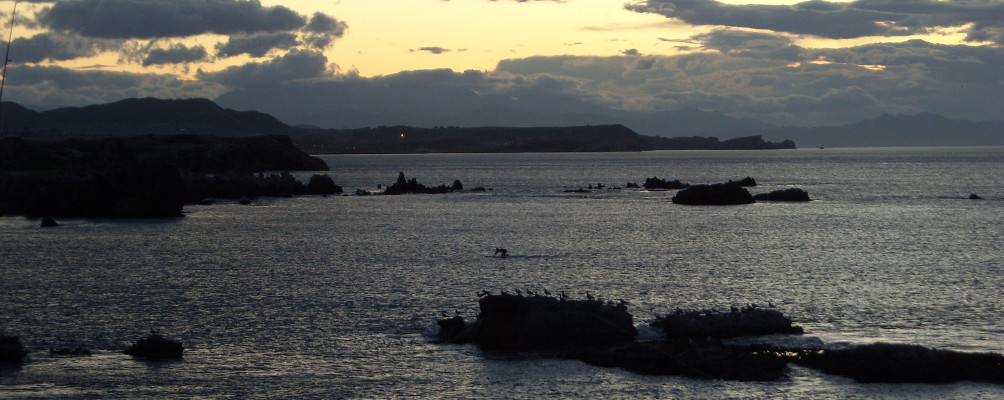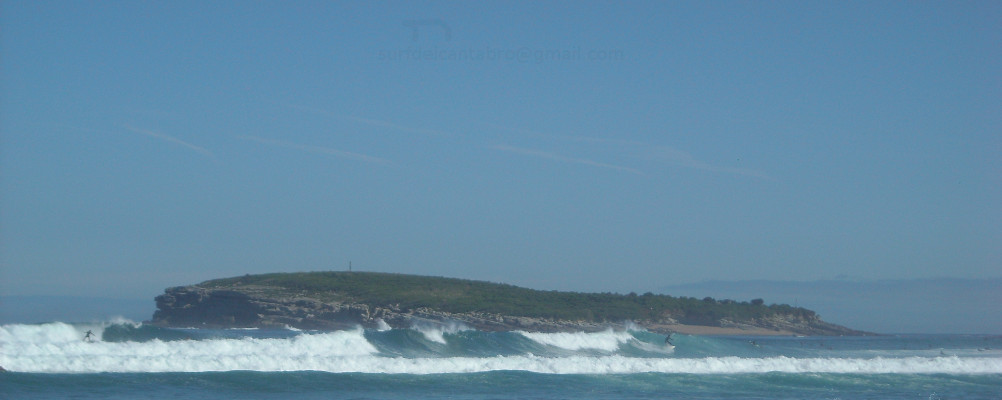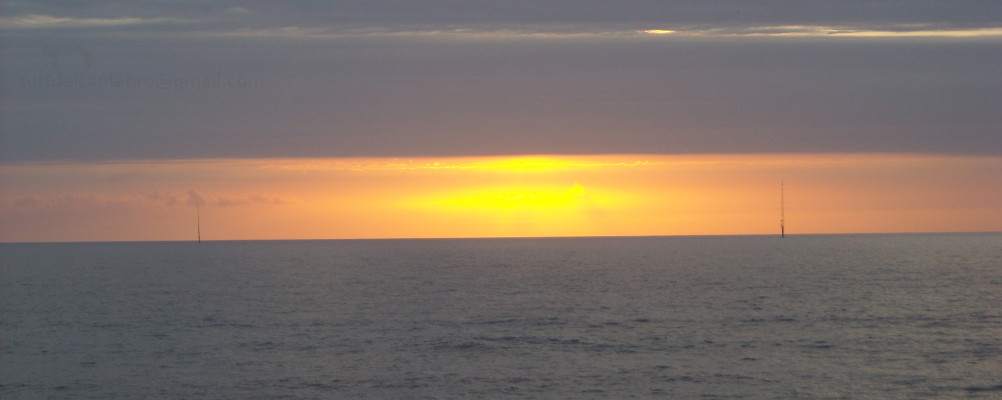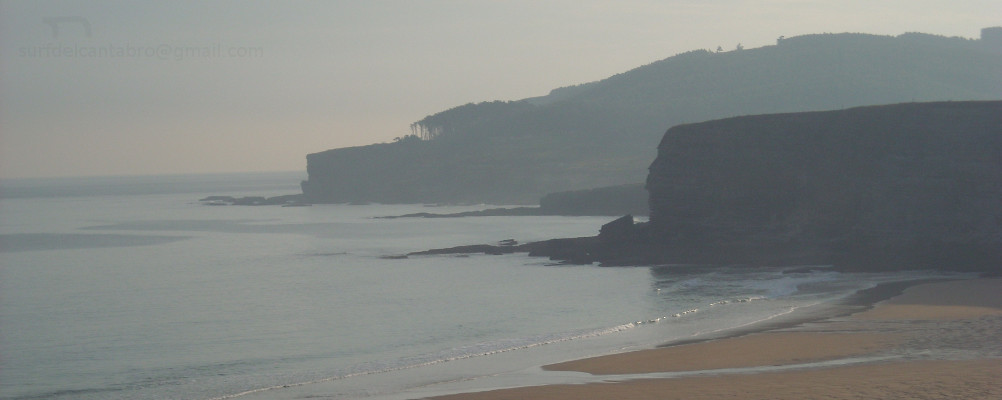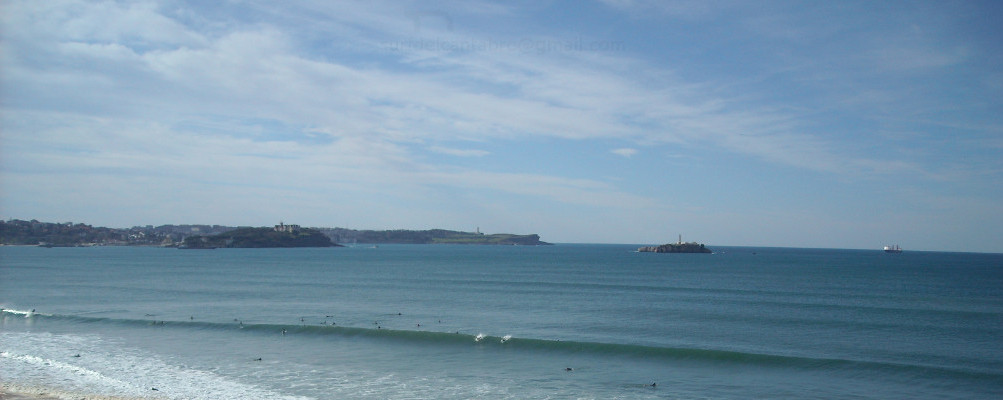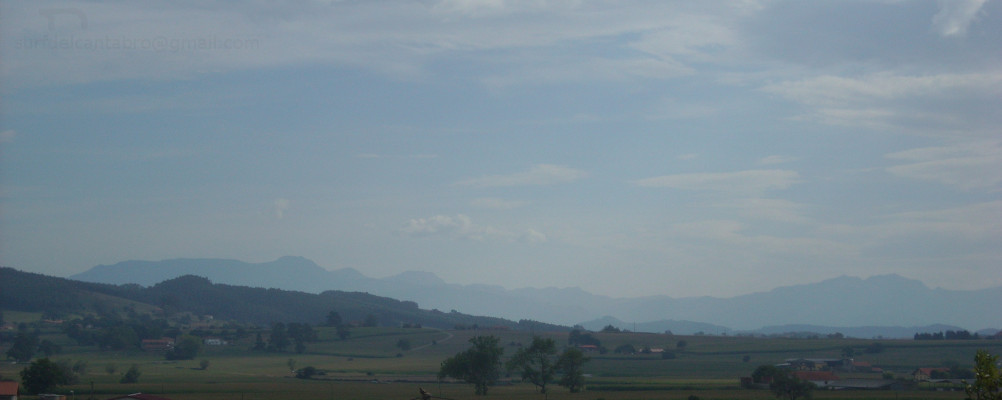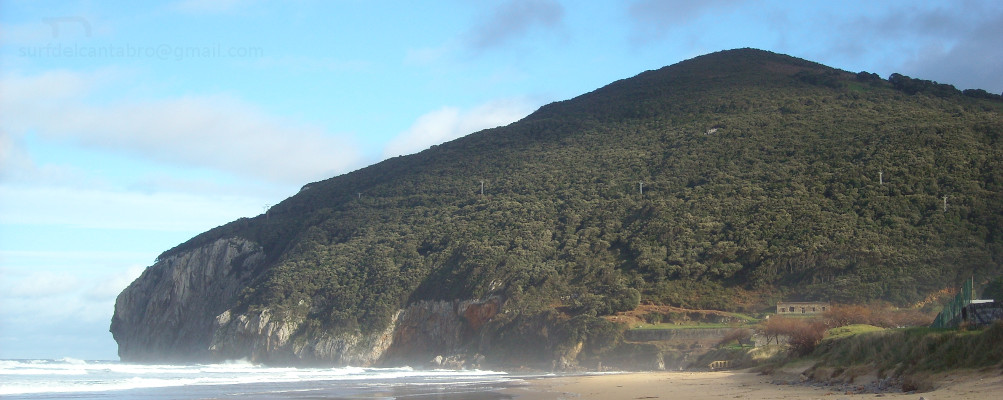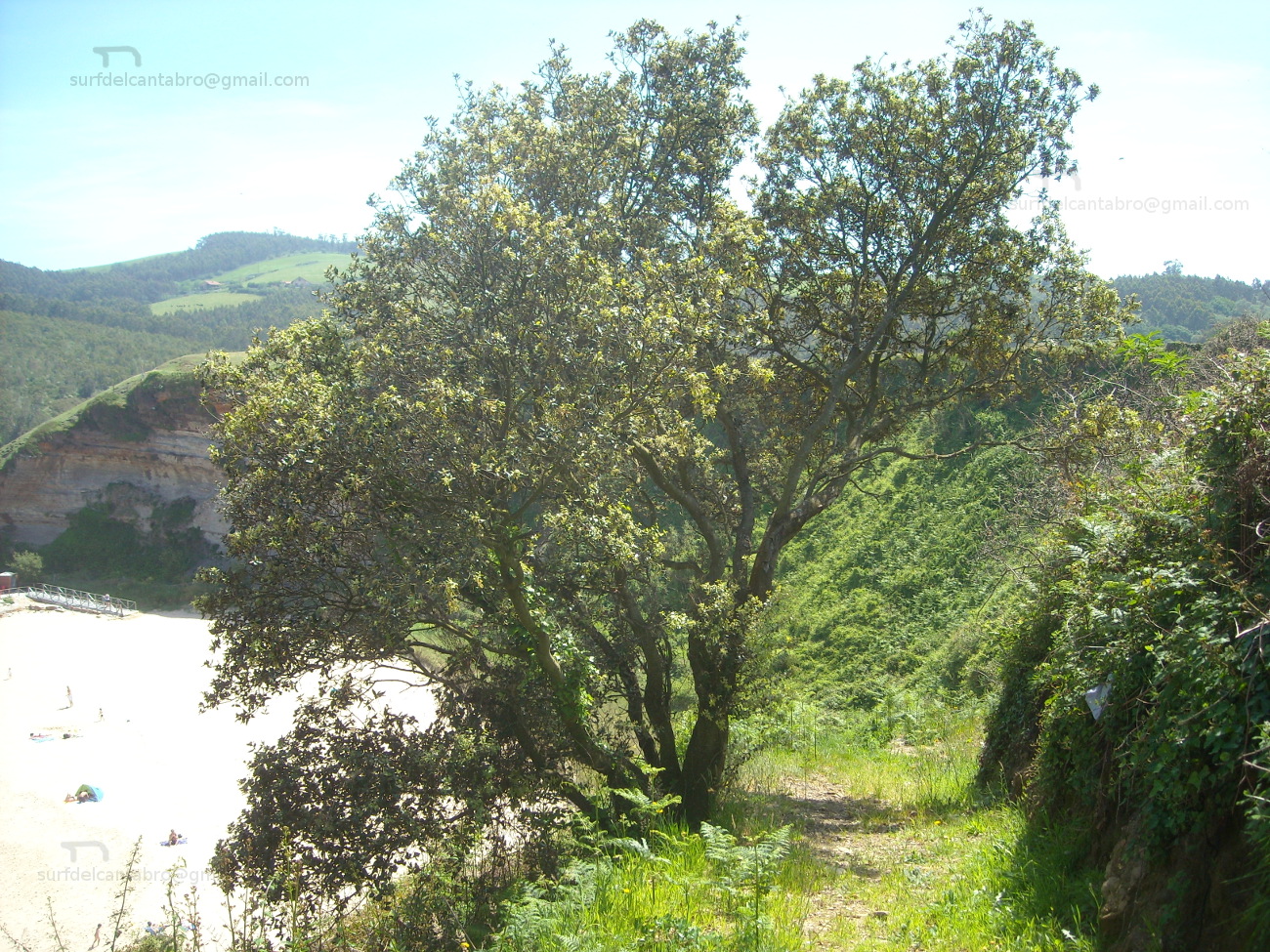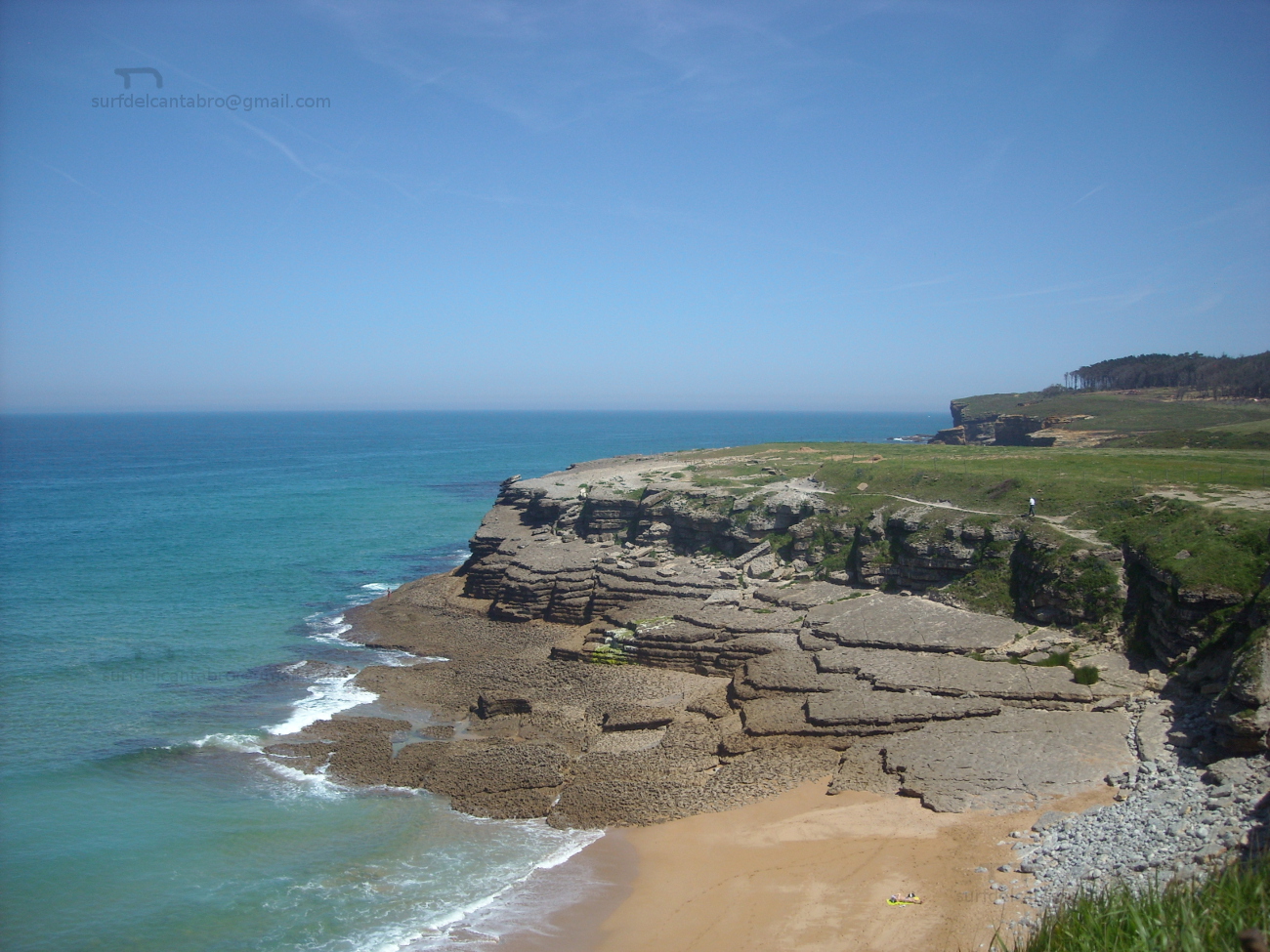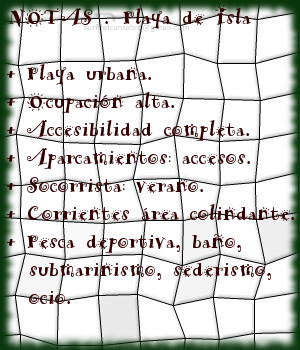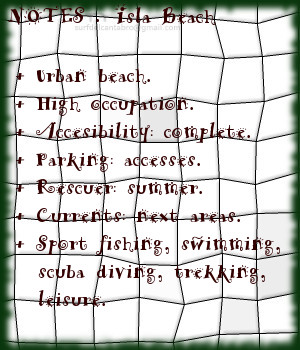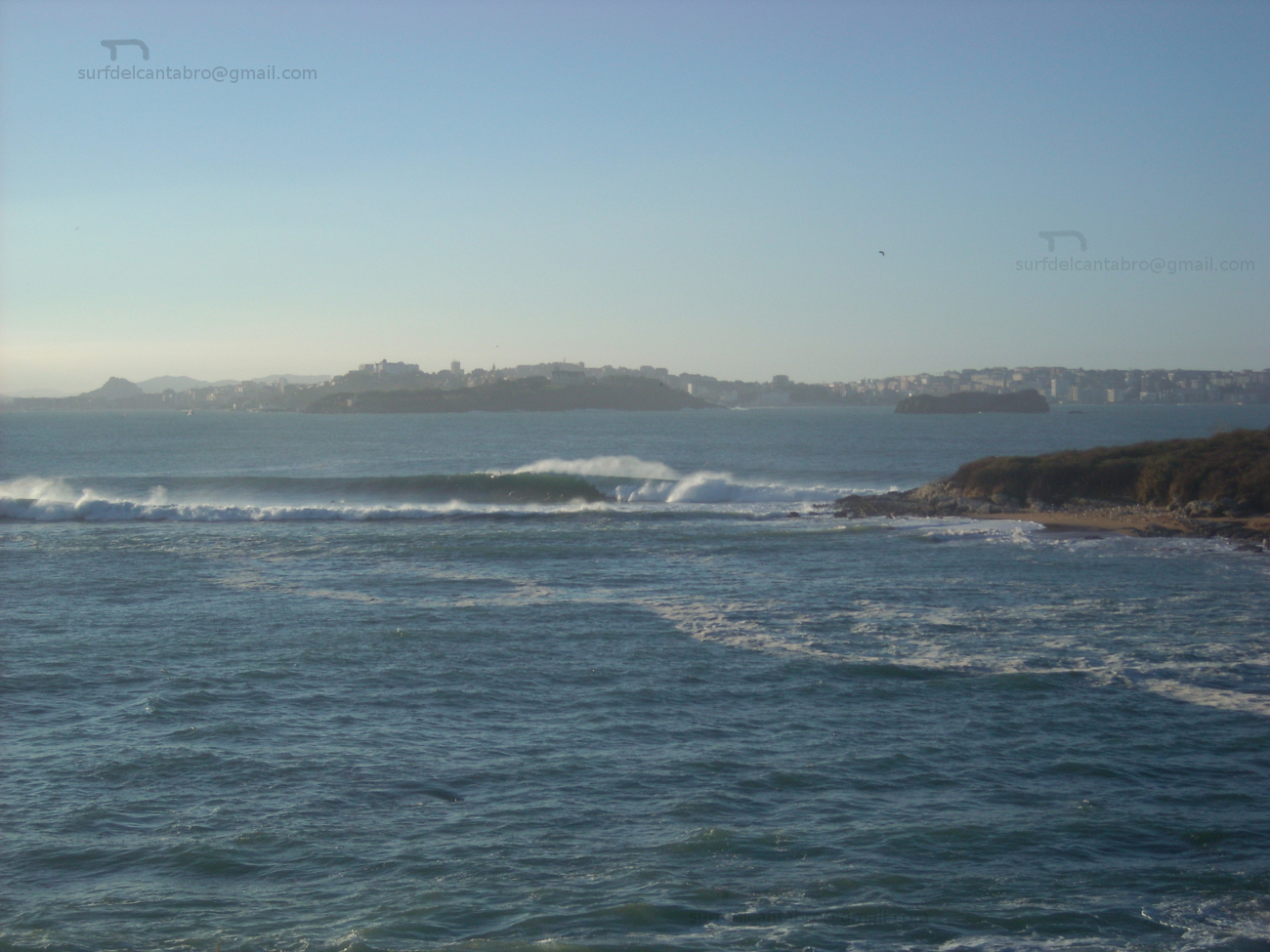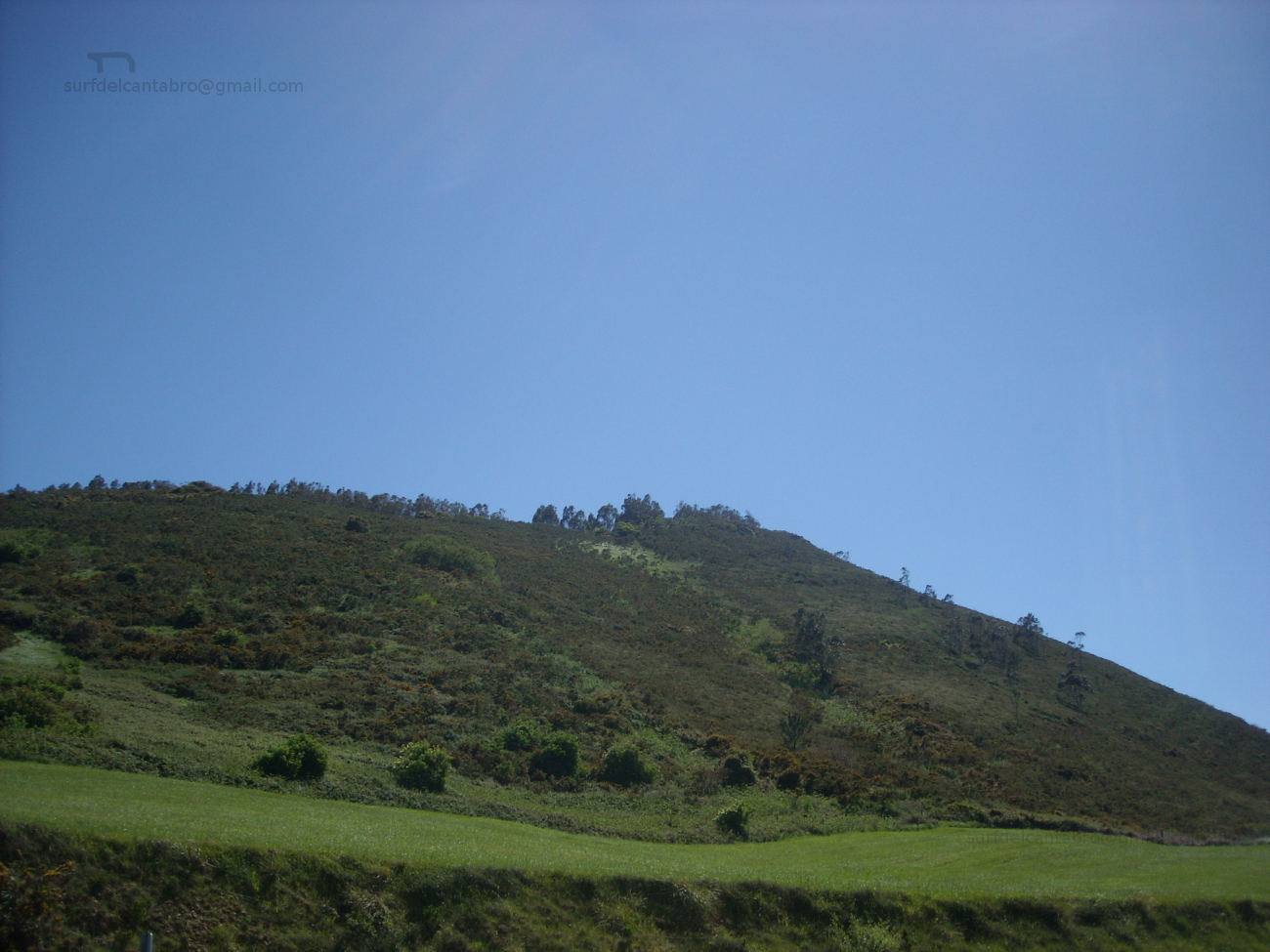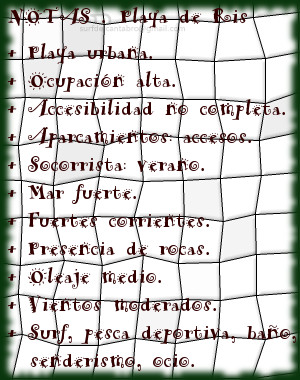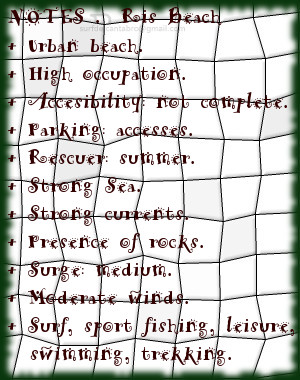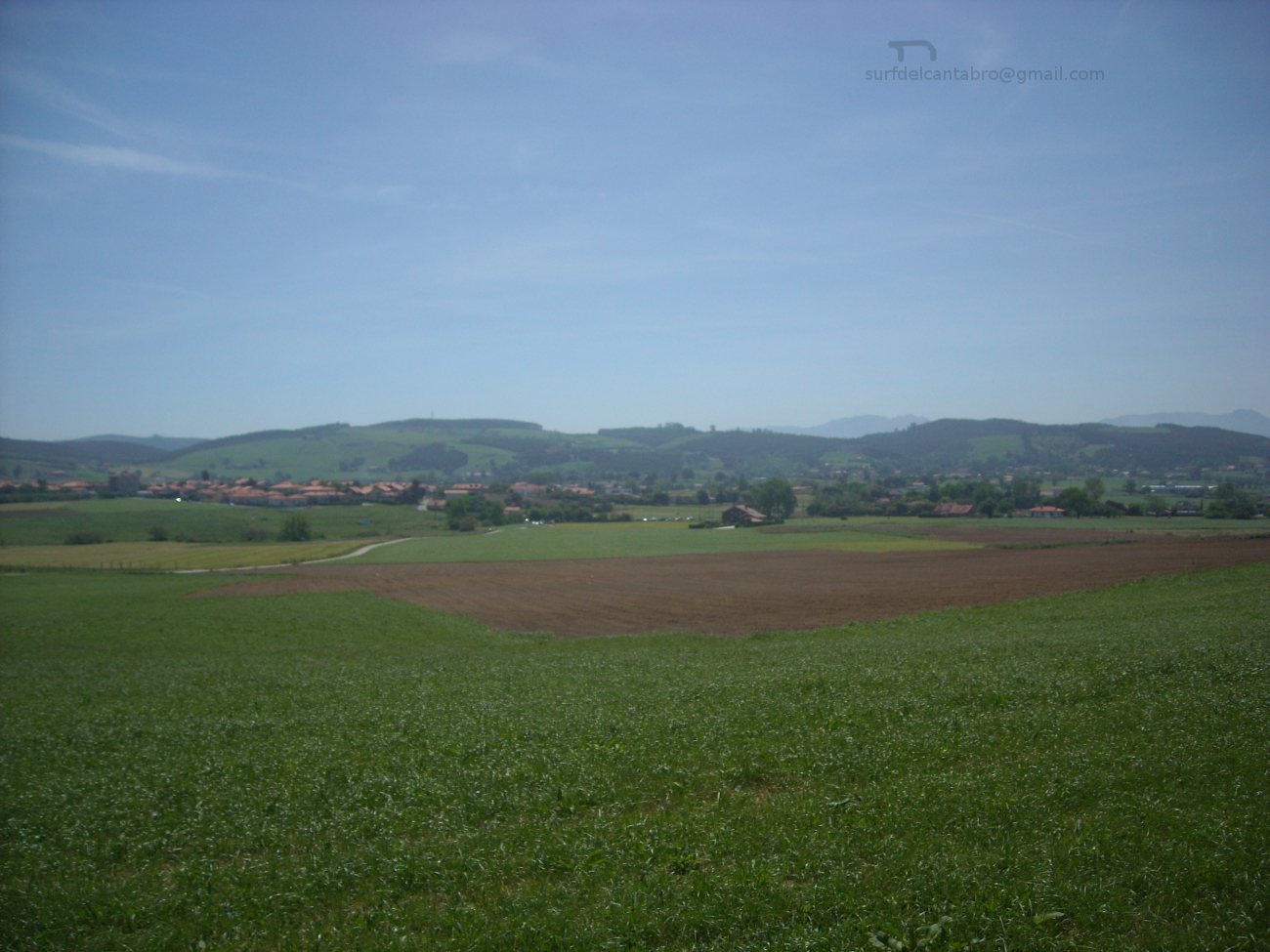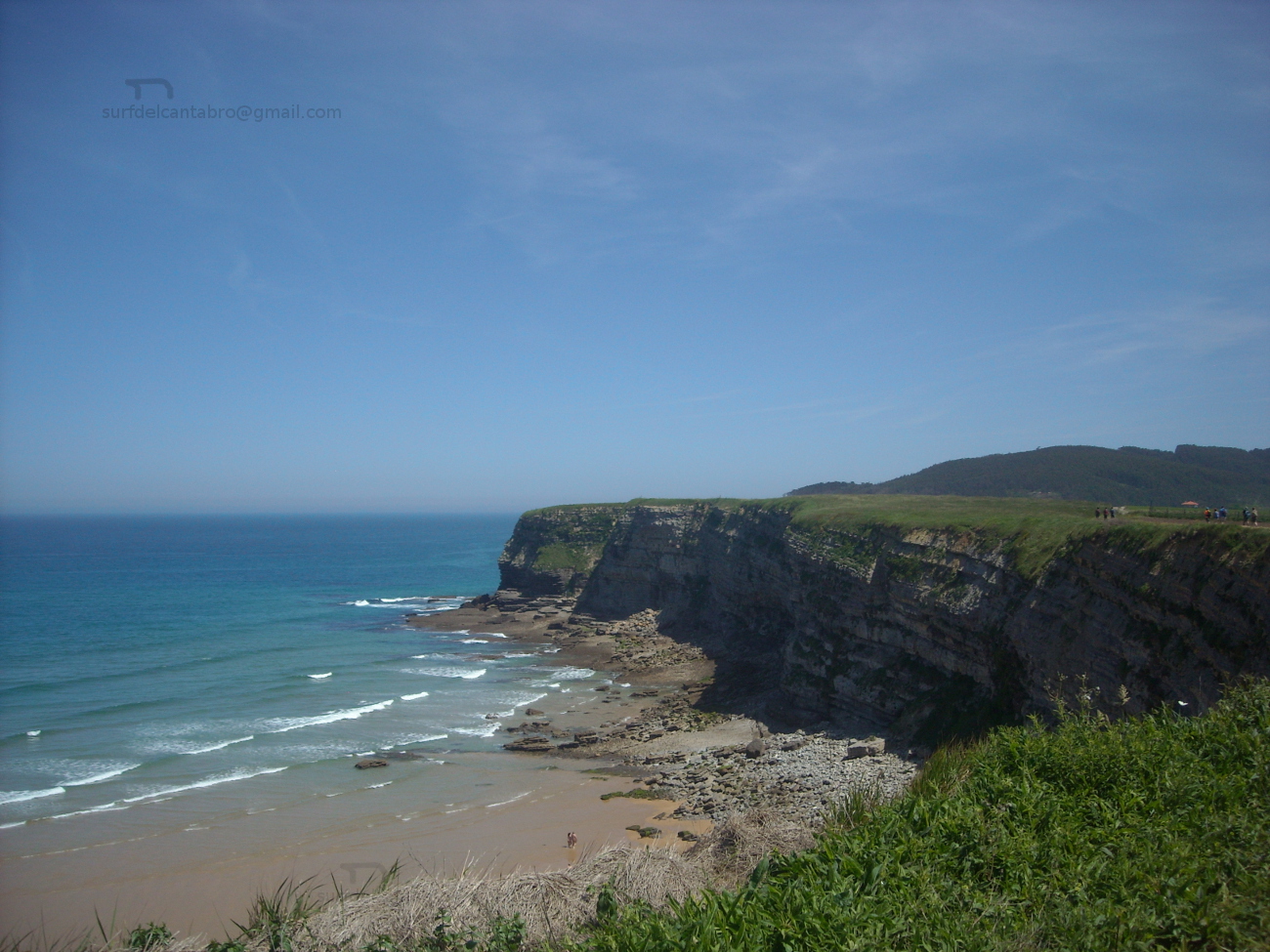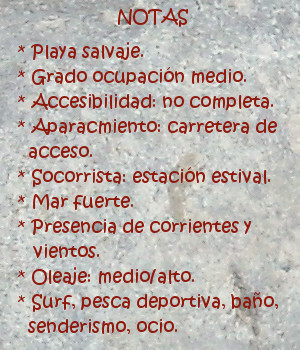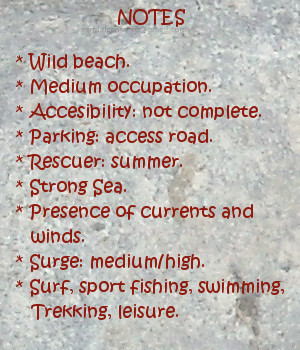Robayera, playa
![]() La playa de Robayera se encuentra en el municipio de Miengo, en la costa central de Cantabria. Es un pequeño arenal de 100 metros de longuitud y una anchura media aproximada de 10 metros. Emplazada en la desembocadura de la Ría de Mogro, está expuesta a las fuertes corrientes que transitan del estuario hacia mar abierto y viceversa por efecto de las mareas, la morfología de la zona y la fuerza del Mar.
La playa de Robayera se encuentra en el municipio de Miengo, en la costa central de Cantabria. Es un pequeño arenal de 100 metros de longuitud y una anchura media aproximada de 10 metros. Emplazada en la desembocadura de la Ría de Mogro, está expuesta a las fuertes corrientes que transitan del estuario hacia mar abierto y viceversa por efecto de las mareas, la morfología de la zona y la fuerza del Mar.
Esta pequeña, abrupta y rocosa cala es disfrutada en plenitud cuando recibe la marea baja. Ubicada en la ladera Este que une la Punta del Cuerno con la desembocadura de la ría, es un punto de confluencia de las corrientes y vientos de la zona. Su oleaje alto y potente es sólo apto para surfers profesionales que sean conscientes de los riesgos e impracticable cuando hay marejada.
Es por sus condiciones una zona ideal para la pesca deportiva y el senderismo. Comenzando el recorrido en la playa de Robayera, caminando sobre los acantilados, llegaremos a la Punta del Cuerno. El sonido del mar bañando la costa, acompañará cada paso sazonando el trayecto que se endulza con la contemplación del entorno. A la derecha un extenso arenal de más de 2 kilómetros de longitud, en frente un pequeño archipiélago compuesto por cuatro islotes. Desde su punto más al norte podremos divisar Suances y su entorno.
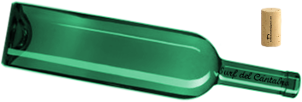
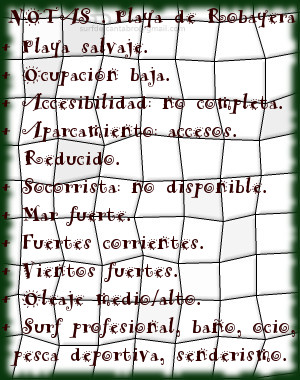
Robayera, beach
![]() The beach of Robayera is in the municipality of Miengo, on the central coast of Cantabria. It is a small sandbank of 100 meters of length and an average approximate width of 10 meters. Located in the Stuary of Mogro, it is exposed to strong currents that move from the estuary towards open sea and vice versa due to effect of the tides, the morphology of the zone and the force of the Sea.
The beach of Robayera is in the municipality of Miengo, on the central coast of Cantabria. It is a small sandbank of 100 meters of length and an average approximate width of 10 meters. Located in the Stuary of Mogro, it is exposed to strong currents that move from the estuary towards open sea and vice versa due to effect of the tides, the morphology of the zone and the force of the Sea.
This small, abrupt and rocky cove is enjoyed in fullness when it receives the low tide. Located in the East hillside that joins El Cuerno Tip with the rivermouth , it is a point of confluence of the currents and winds of the zone. Its high and powerful surge is only suitable for professionals surfers who are conscious of the risks and impracticable when there is heavy sea.
It is for its conditions an ideal zone for sport fishing and the hiking. Beginning the tour in Robayera’s beach, walking on the cliffs, we will come to the El cuerno Tip. The sound of the sea lighting the coast, will accompany every step; which seasons the journey that is sweetened by the contemplation of the environment. To the right: an extensive sandbank of more than 2 kilometres of length, in front of us: an small archipelago composed by four islands. From its northern point, we will be able to enjoy Suances and its surroundings.

